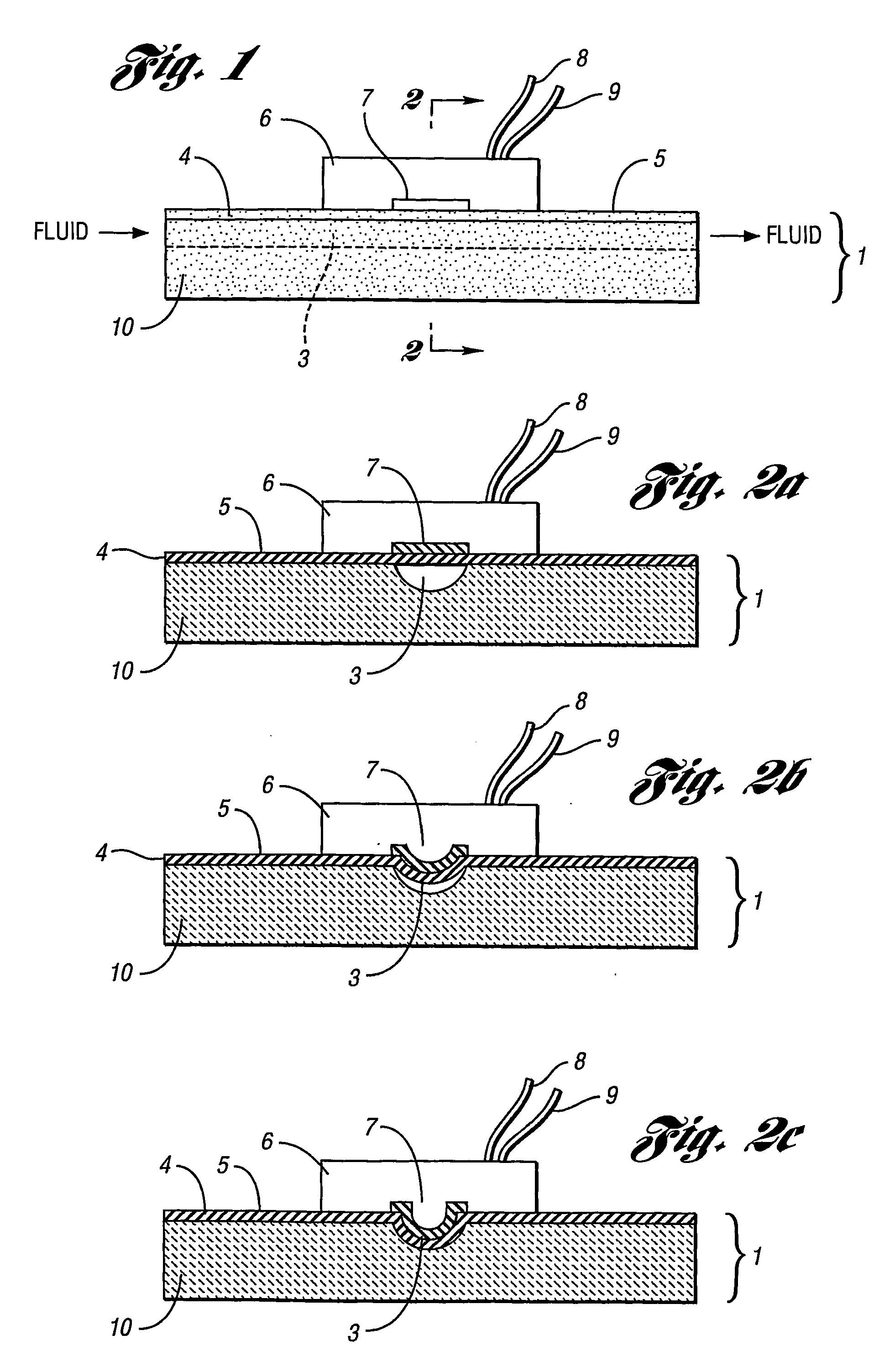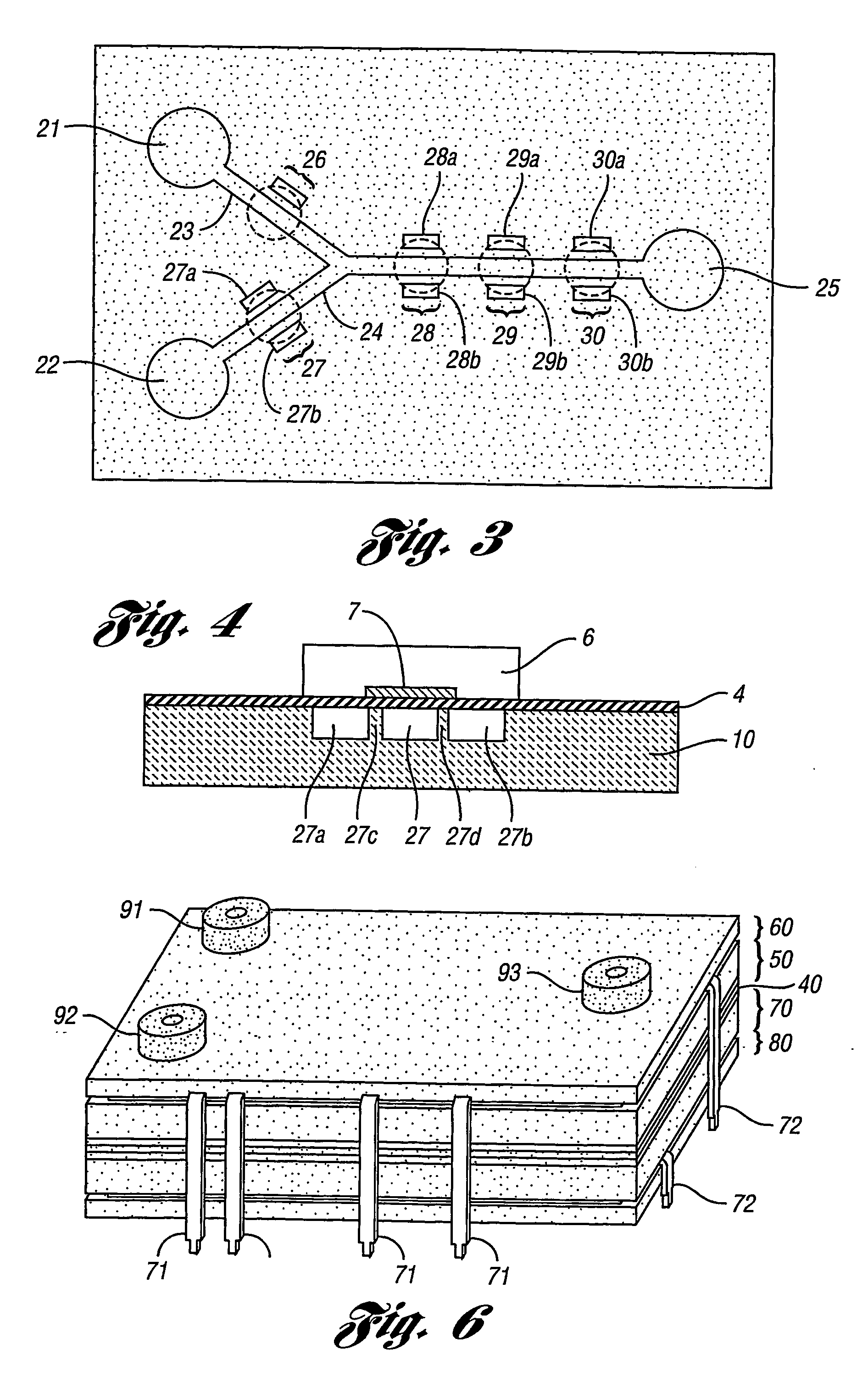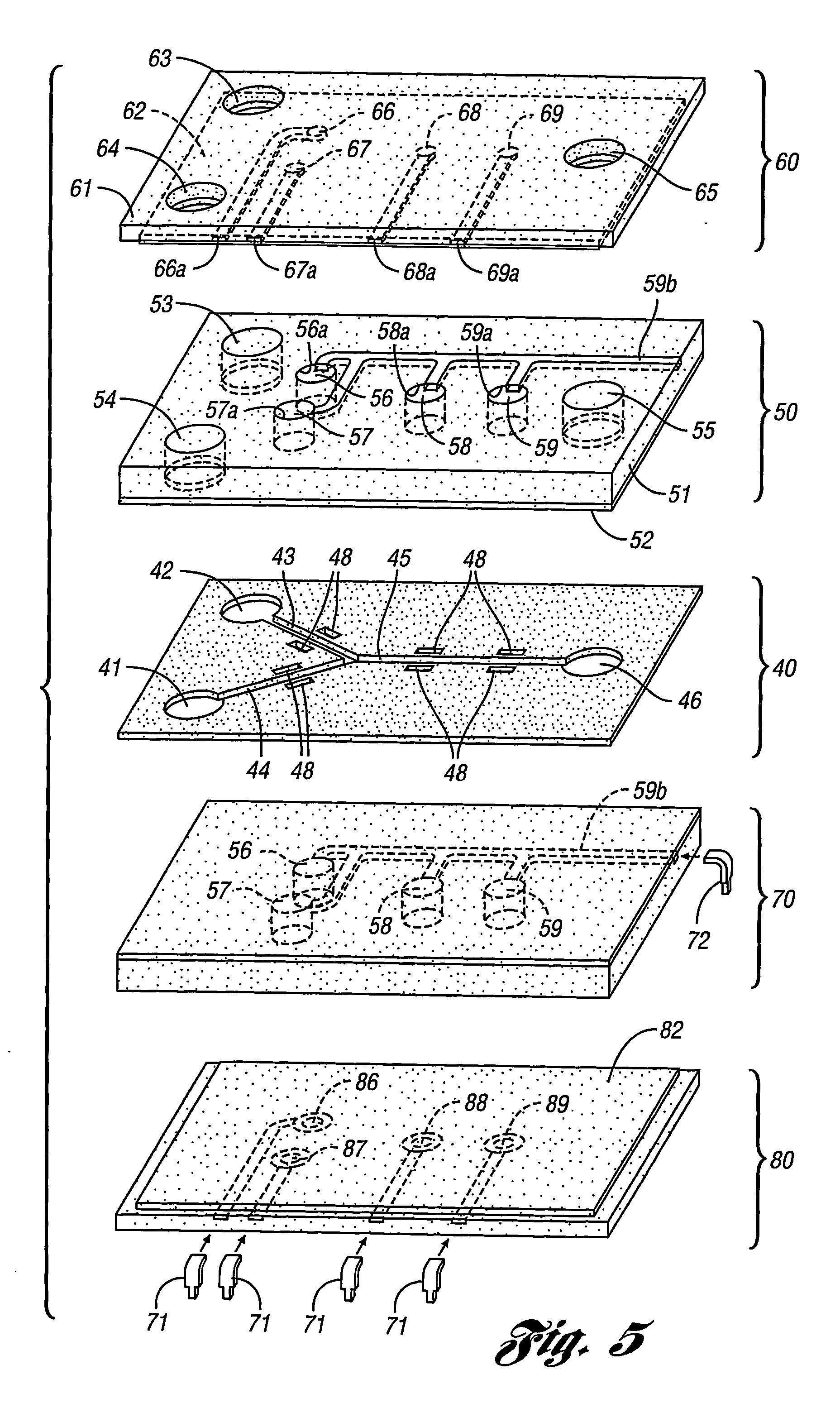Integrated microfludic control employing programmable tactile actuators
a microfluidic control and tactile actuator technology, applied in the direction of positive displacement liquid engines, instruments, laboratory glassware, etc., can solve the problems of inability to individually address control sites, limited number of individually actuated components, and enormous difficulties in device fabrication, etc., to achieve the effect of low cost and easy operation
- Summary
- Abstract
- Description
- Claims
- Application Information
AI Technical Summary
Benefits of technology
Problems solved by technology
Method used
Image
Examples
example 1
[0064] A microfluidic device is fabricated of PDMS (SYLGARD® 184) with active portions located below a commercial Braille display having 8-dot cells, the protrusions of which are approximately 1 mm in diameter, at spacings of 2.5 mm center-to-center in each cell, with an intercell distance of 3.2 mm. Each protrusion can protrude 1.5 mm from the surface of the display when activated. The elastomeric PDMS device channels have a relatively thin 100-200 μm bottom PDMS membrane, which rests upon the Braille display. The microfluidic device has a common observation channel and two valved supply channels, and is used to study Braille display actuated valving. The valves are constructed as described earlier with voids adjacent the active portions, and located on the microfluidic device so as to be below dimples on a commercial Braille display. One inlet channel is supplied with a solution of fluorescent dye from an inlet reservoir, while the other inlet reservoir contains no dye. The respec...
example 2
[0066] Photoplotted films were ordered from CAD / Art Services, Inc. (Poway, Calif.). Four-inch double-sided polished borosilicate glass wafers (thickness=200 μm) were from Plan Optik GmbH (Elsoff, Germany), 48 mm×65 mm borosilicate cover glasses (thickness=160 μm) from Fisher Scientific, negative photoresist SU-8 50 from MicroChem Corp. (Newton, Mass.), and PDMS (Sylgard 184) from Dow Corning (Midland, Mich.). Photoresist was exposed by a transilluminator (FB-TIV-816A, Fisher Scientific) with six replaced fluorescent blacklight lamps (TL-D15W / 08, Philips), and a PLA-501FA mask aligner by Canon U.S.A., Inc. (Lake Success, N.Y.). Oxidation was performed using a plasma etcher (Plasma Prep II; Structure Probe Inc., West Chester, Pa.). A Braille display DotView DV-1 was obtained from KGS Corp. (Saitama, Japan). Phosphate-buffered saline (PBS) was obtained from Fisher Scientific.
[0067] Photomasks of microchannels (width: 10 μm˜400 μm) were produced by photoplotting at 20,000 dpi to form a...
example 3
[0070] Each silicone chip is a multilayer assembly of poly(dimethylsiloxane) (PDMS). The bottom layer is formed at a thickness of 120 μm by spin coating a 1:10 (curing agent:base) ratio of prepolymer (Sylgard 184, Dow-Corning) onto a silanized glass wafer at 200 rpm for 4 minutes. A Si master with positive relief structure is made of photoresist (SU-8, MicroChem) defined through backside diffused-light photolithography as described in Example 2. Prepolymer (1:10 ratio) is cast against the positive relief features to form a ˜1 mm middle layer. The resultant negative replica formed channels when sealed by the bottom layer. Holes are punched by sharpened 14-gauge blunt needles through the middle layer towards the top layer. Prepolymer of ratios 1:10 and then 1:20 is successively poured on machined brass molds so that the ceiling of the top layer was richer in prepolymer base, providing a better sealant for future injections by needles. All three cured layers attached firmly together af...
PUM
| Property | Measurement | Unit |
|---|---|---|
| thickness | aaaaa | aaaaa |
| depth | aaaaa | aaaaa |
| height | aaaaa | aaaaa |
Abstract
Description
Claims
Application Information
 Login to View More
Login to View More - R&D
- Intellectual Property
- Life Sciences
- Materials
- Tech Scout
- Unparalleled Data Quality
- Higher Quality Content
- 60% Fewer Hallucinations
Browse by: Latest US Patents, China's latest patents, Technical Efficacy Thesaurus, Application Domain, Technology Topic, Popular Technical Reports.
© 2025 PatSnap. All rights reserved.Legal|Privacy policy|Modern Slavery Act Transparency Statement|Sitemap|About US| Contact US: help@patsnap.com



